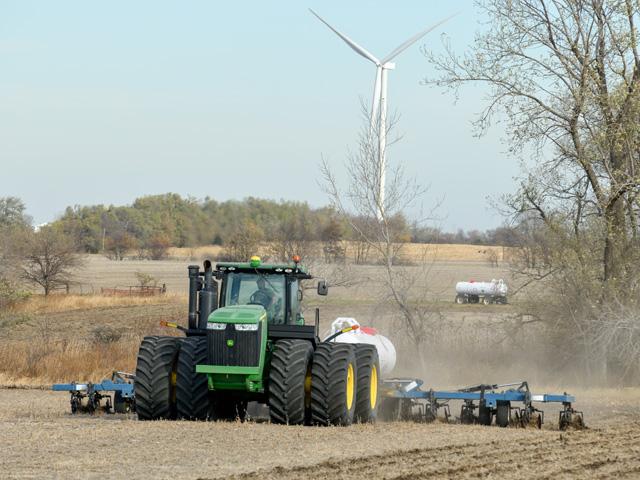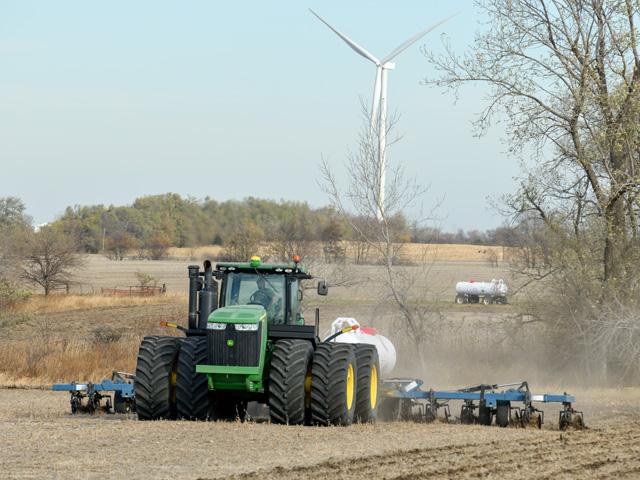Production Blog
12 Safety Tips for Working With Anhydrous Ammonia
This year, the state of Illinois required mandatory training for farmers who transport or apply anhydrous ammonia or who maintain anhydrous ammonia equipment.
The rule went into effect April 1, 2022. Under the regulation, they are certified to understand the properties of ammonia, to become competent in safe operating practices, and to take appropriate actions in the event of a leak or an emergency.
Kevin "KJ" Johnson, a farmer and president of the Illinois Fertilizer and Chemical Association (IFCA), said if Illinois farmers balked at the mandatory training, he didn't hear complaints. A total of 12,389 Illinois growers have taken the certification course since the law was passed. Of those, 6,656 attended an in-person class, and the remainder took online classes to receive certification. Recertification is required every three years.
Understanding the chemical and physical properties of anhydrous ammonia is one of the first steps in understanding why safety regulations were put in place, Johnson said.
For example, 1 cubic foot of liquid anhydrous ammonia, contained under pressure, produces 850 cubic feet of vapor when released, an expansion rate of 850 to 1. "When farmers hear that, they suddenly begin to understand why it is so important to check for nicks in hoses, shut-off valves during transport, and hold transport driving speed under 25 miles per hour (mph).
"If we could just do those three things, we could cut incidents dramatically," he said.
The word anhydrous means a substance without water and that definition also explains much about the need for safety precautions. Anhydrous ammonia has a strong affinity for water and takes moisture from anything it encounters. That's why it is particularly damaging to skin, eyes, and lungs.
IFCA offers this list of 12 safety recommendations for working with anhydrous ammonia:
1. Remember to always utilize your ammonia gloves and chemical splash goggles when working around ammonia. Never wear contact lenses when working around anhydrous ammonia.
2. Always assume ammonia is present in all equipment or hoses and thoroughly purge the ammonia prior to inspection or maintenance.
P[L1] D[0x0] M[300x250] OOP[F] ADUNIT[] T[]
3. Inspect those ammonia hoses for any nicks, cuts, soft spots and coupler slippage.
4. Follow the "replace by" date indicated by the hose manufacturer and remember ammonia hoses cannot be repaired.
5. Make sure each nurse tank has 5 gallons of fresh clean water. Additionally, put a gallon water jug in your truck and tractor.
6. Slow down! Drive no more than 25 mph when pulling ammonia tanks.
7. Avoid congested or high-traffic areas when pulling nurse tanks to and from the field of application.
8. ALWAYS shut-off ALL nurse tank valves and disconnect transfer hoses before pulling onto a public roadway. This is required by law. You should never have a "charged" system when sharing the roadway.
9. Nurse tanks should not be operated in low-light conditions or before or after sunset UNLESS you have a rotating, flashing amber light on the tank(s). Today's motorists are not as familiar or patient with farm equipment, even in rural areas, so it is always best if slow-moving vehicles are kept off the roads during non-daylight hours.
10. Never forget the safety chains, even in the field of application. Nurse tank trailers are put to the test during the ammonia season, being asked to serve as both highway vehicles and then being pulled through rough field conditions. The safety chains can save you from catastrophe if the hitch fails! Hook them up every time.
11. Are your breakaway devices working on the applicators? This is another safety mechanism designed to prevent releases, but they must be installed correctly and maintained so that they work. Proper installation and preventive maintenance are key!
12. Never hesitate to make the call if you have an ammonia release. In Illinois, a reportable quantity (RQ) for anhydrous ammonia is 100 pounds (18 gallons) or more. If you are unsure if you have met the RQ threshold, still make the call. Tell the emergency operator exactly what has happened so that law enforcement and fire departments show up prepared to deal with ammonia. Whoever is in possession of the ammonia tank at the time of the release must make this call immediately.
For information on how to file a report on a release in Illinois go to: https://ifca.com/…
For DTN article on the risks of applying nitrogen too early this fall go to:
For another article from DTN on anhydrous ammonia safety go to: https://www.dtnpf.com/…
Purdue has an excellent handbook on detailing how to work with anhydrous. Find it here: https://ppp.purdue.edu/…
For a check list of safety considerations from Iowa State University go to: https://crops.extension.iastate.edu/…
For more information on the Illinois Certified Grower Training go to:
Pamela Smith can be reached at pamela.smith@dtn.com
Follow her on Twitter @PamSmithDTN
(c) Copyright 2022 DTN, LLC. All rights reserved.






Comments
To comment, please Log In or Join our Community .